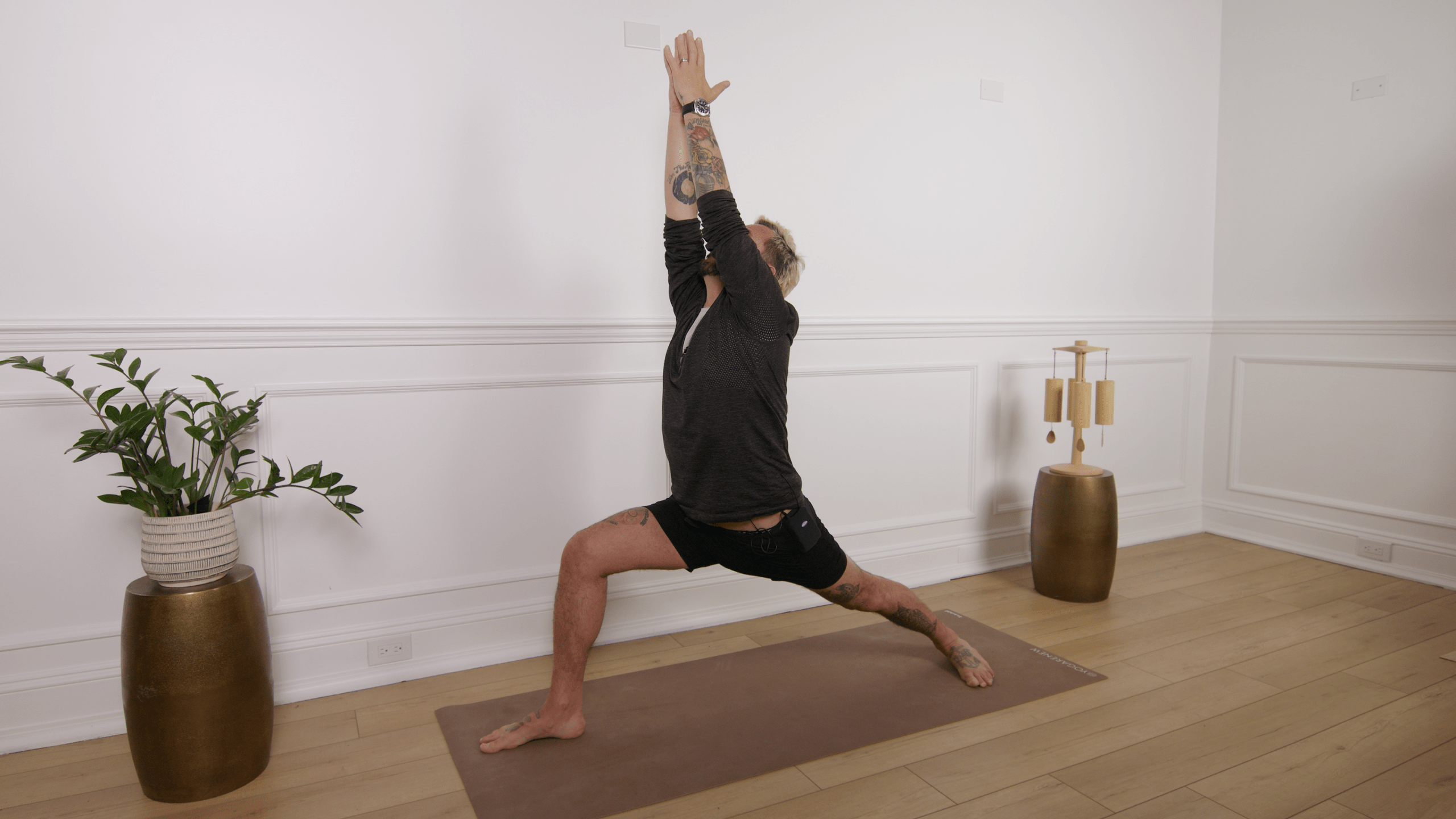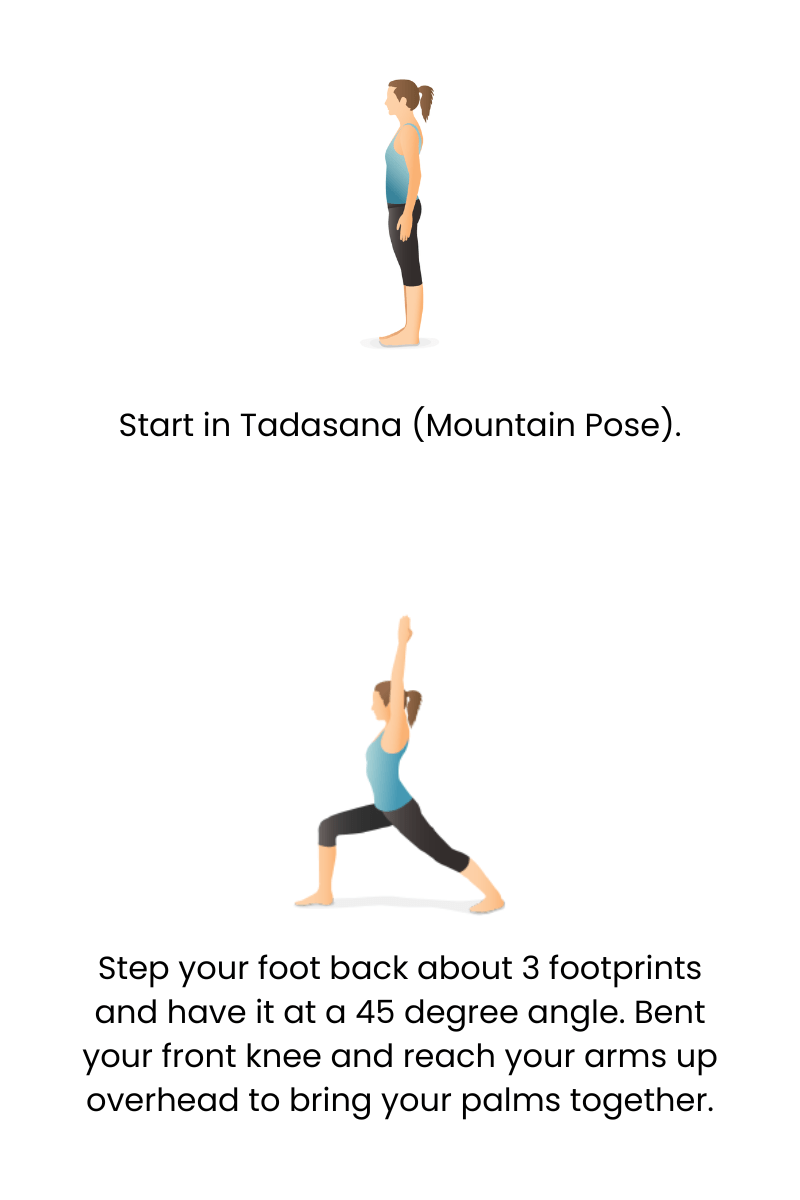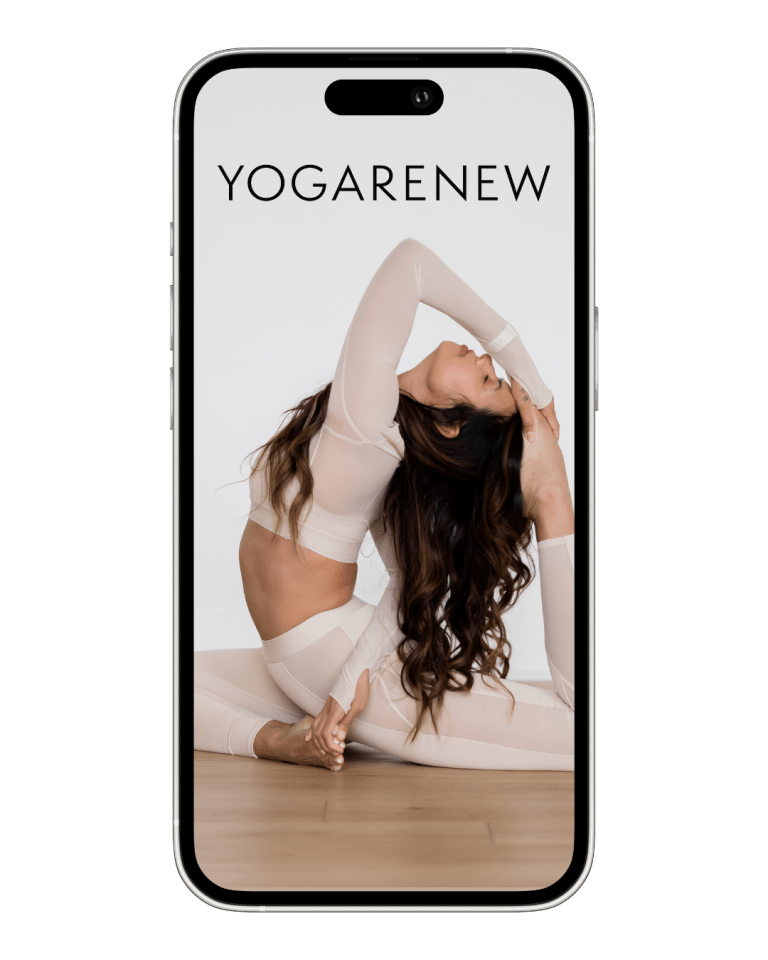What is Warrior One?
English Name: Warrior I
Sanskrit Name: Virabhadrasana I (pronounced veer-ah-bah-DRAHS-uh-nuh)
Category: Standing, Foundational, Strengthening, Beginner

English Name: Warrior I
Sanskrit Name: Virabhadrasana I (pronounced veer-ah-bah-DRAHS-uh-nuh)
Category: Standing, Foundational, Strengthening, Beginner
Warrior I, or Virabhadrasana I, is a foundational standing pose that builds strength, stability, and focus. This powerful posture combines grounding through the legs with an active lift of the torso and arms, encouraging both physical resilience and inner confidence.
Often used in standing sequences and sun salutations, Warrior I energizes the body, challenges balance, and promotes mental clarity. Its dynamic alignment of the hips and shoulders encourages full-body awareness, making it a key posture in many yoga styles from Hatha to Vinyasa
Begin in Mountain Pose (Tadasana) at the top of your mat.
Step your left foot back about 3–4 feet, keeping your front foot pointing forward.
Turn your back foot out about 45–60 degrees, grounding through the outer edge.
Bend your front knee directly over the ankle, creating a 90-degree angle.
Square your hips toward the front of the mat (this may require adjusting the back foot).
Inhale to lift your arms overhead, palms facing each other or touching.
Keep the shoulders relaxed and ribs drawn in as you lengthen through the spine.
Gaze forward or slightly upward if comfortable.
Hold for 5–10 breaths, then step forward and repeat on the opposite side.


Keep front knee stacked over ankle and tracking over the second toe
Press evenly through both feet, especially the outer edge of the back foot
Engage the core to stabilize the spine and prevent over-arching the low back
Square the hips forward as much as possible without straining
Relax the shoulders while reaching actively through the arms
“Root through your feet as you rise through your hands.”
“Imagine pulling your front hip back and your back hip forward.”
“Soften your ribs, but lift your heart.”
“Bend deeply into your front knee like a warrior preparing for battle.”
“Let your breath create space in the chest and hips.”
Warrior I embodies strength, presence, and intention. This empowering posture grounds you in your body while lifting your energy upward. It improves balance, builds stamina, and deepens your connection to both breath and movement. As one of yoga’s signature standing poses, Virabhadrasana I helps cultivate focus, resilience, and a steady foundation—on and off the mat.
Warrior I has squared hips and arms overhead, while Warrior II opens the hips and arms out to the sides.
Yes! It’s a beginner-friendly pose that can be easily modified for all levels.
It’s okay if the hips don’t face forward completely—aim for intention over perfection. Adjust your back foot or keep a slight turnout.

Explore classes & pose tutorials for any style, format, duration or experience level with a free account in the YogaRenew app. Or subscribe and gain access to workshops, live classes and more.